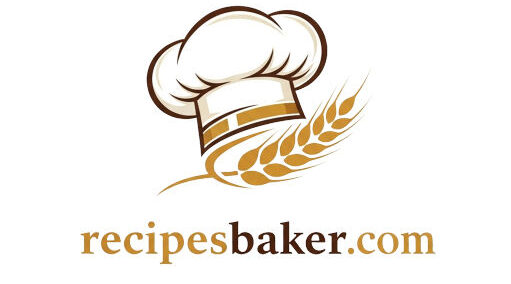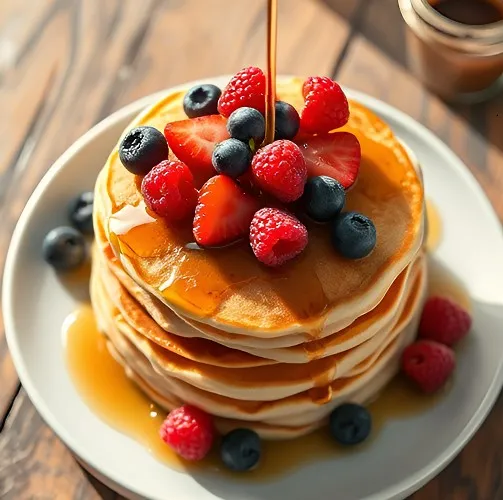If you’re a pancake enthusiast who for one reason or another is steering clear of dairy, you’ve just found your new favorite recipe. In this guide, I’m excited to share a delicious, dairy‐free pancake recipe that replaces milk with everyday ingredients you probably already have in your kitchen. Whether you’re lactose intolerant, vegan, or simply looking for a dairy‐free twist on a classic breakfast, this Pancake Recipe No Milk is designed with simplicity, flavor, and that “wow” factor in mind. In the following pages, you’ll find everything you need: from the backstory behind dairy-free pancakes, through detailed ingredient choices and precise instructions, to a variety of creative ideas for toppings and serving suggestions. Let’s dive into our dairy-free pancake adventure!
Table of Contents
The Rise of Dairy-Free Pancakes
Over the years, dietary preferences and needs have evolved. More people are exploring pancake recipes that exclude dairy, not only because of allergies and intolerances but also due to personal health and ethical choices. Pancakes, being a universal comfort food, have naturally caught the imagination of home cooks wishing to modify traditional recipes while keeping that light, fluffy texture and rich taste.
For many, the thought of pancakes conjures memories of weekend brunches, cozy family mornings, and even spontaneous late breakfasts made with a splash of creativity. However, traditional recipes that rely on milk can be off-putting or unsuitable for those avoiding it. That’s why this Pancake Recipe No Milk is so refreshing—it transforms a classic dish into something everyone can enjoy without sacrificing taste or texture.
Why Choose a No-Milk Pancake Recipe?
There are several reasons to explore a dairy-free pancake recipe alternative. First and foremost, many people are lactose intolerant or have dairy allergies that make consuming regular pancakes undesirable. Finding a reliable no-milk recipe means you’re not missing out on a breakfast staple that everyone loves. Moreover, a dairy-free version is also beneficial for those who adhere to vegan diets or who choose to reduce their dairy intake for various health reasons.
In our recipe, the absence of milk is not a drawback—it’s a deliberate choice that opens up a world of possibilities. By swapping out milk for water or a plant-based liquid, you maintain the pancake’s moistness while reducing fats and calories if that’s your goal. Additionally, the simplified ingredient list means fewer complications and a smoother cooking experience, especially when you’re in a rush to get a nutritious breakfast on the table.
The Magic Behind Pancakes: A Brief History
Believe it or not, pancakes have a history that stretches back thousands of years. Ancient civilizations crafted simple flat cakes from grain flour and water, cooking them on hot stones or in primitive ovens. Over time, as ingredients became more accessible and culinary traditions evolved, these humble beginnings gave way to pancakes that we recognize today—with eggs, leavening agents, and, often, dairy.
The transition from ancient flatbreads to modern pancakes mirrors our journey toward personalization in the kitchen. Today, there’s room for everyone at the pancake table—including those who prefer their pancakes dairy-free. By tweaking the classic recipe, not only can we adapt to modern dietary needs, but we also celebrate the diversity of modern cooking and the creativity that comes from rethinking old traditions.
What You’ll Need for the Perfect Pancake Recipe No Milk
Before we jump into the step-by-step process, let’s review the ingredients that make this pancake recipe shine. Each component plays a crucial role in ensuring a pancake that is fluffy on the inside, slightly crispy on the edges, and full of flavor. Here’s a rundown of our essential ingredients:
Flour: Traditional all-purpose flour serves as the foundation of our batter. It provides structure while giving the pancake its tender crumb. If you’re feeling adventurous, whole wheat or gluten-free options can also work, though you might need slight adjustments to the liquid ratio.
Baking Powder: This is the secret behind that irresistible fluffiness. A proper balance of leavening helps the pancake rise beautifully, regardless of the liquid you use.
Sugar: A small amount of granulated sugar not only adds a touch of natural sweetness but also aids in browning, giving your pancakes that appetizing golden hue.
Salt: Often overlooked, salt is essential for balancing the sweetness and enhancing the flavors of the other ingredients.
Eggs: Eggs bind the ingredients together and contribute to the rich texture. For a vegan twist, you can substitute eggs with flax eggs or any other egg replacement.
Liquid: Instead of milk, this recipe calls for water. However, you have the flexibility to substitute water with plant-based alternatives like almond, soy, or oat milk if you prefer a different flavor profile. The key is to stick to a liquid that complements the rest of the ingredients.
Fats: A small amount of melted butter or oil is vital. It not only adds flavor but also ensures that the pancakes release easily from the pan and turn out tender inside.
Vanilla Extract (Optional): A splash of vanilla can elevate the taste, adding a subtle aroma and complexity that makes each bite memorable.
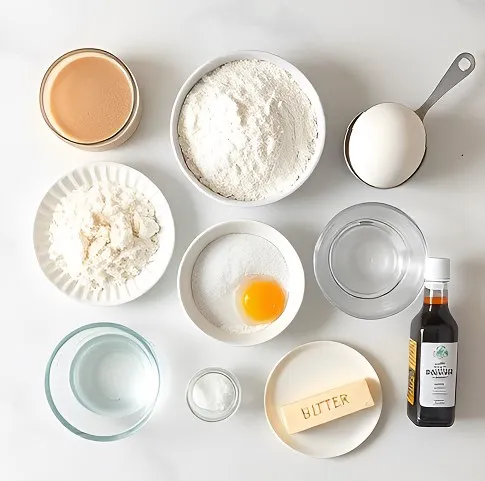
Taking stock of your ingredients ahead of time makes the cooking process stress-free and enjoyable. When you have everything arranged on your counter, the creative process becomes simple and rewarding.
Step-by-Step Instructions: Crafting the Perfect Dairy-Free Pancakes recipe
The beauty of this Pancake Recipe No Milk lies in its straightforward method. While it might seem intimidating at first glance, the process is as intuitive as it is satisfying. Allow me to walk you through each step in detail:
1. Gather Your Ingredients
Begin by measuring out all your ingredients accurately. Precision is key in baking, and having everything measured before mixing helps prevent any missteps. Place your flour, baking powder, sugar, and salt in one bowl, and reserve your egg, water (or chosen liquid), melted butter (or oil), and vanilla in another. Doing this separation ensures that when the batter comes together, every element combines smoothly.
2. Mixing the Dry Ingredients
In your large mixing bowl, sift the flour along with the baking powder, sugar, and salt. Sifting not only aerates the flour but also ensures even distribution of the leavening agents throughout the mix. This step is crucial for achieving that light, airy texture in your pancakes.
3. Blending the Wet Ingredients
In a separate bowl, whisk together the egg (or its vegan substitute), water, melted butter, and vanilla extract. The goal here is to combine these ingredients until the mixture is uniform. A smooth blend of wet ingredients is essential so that when they meet the dry ingredients, you don’t end up with clumps that can affect the overall consistency of your batter.
4. Bringing It All Together
Now, pour the wet mixture into the dry ingredients. Stir gently with a spatula or whisk—remember, overmixing is the enemy of fluffiness. The ideal batter should be slightly lumpy; those small lumps indicate that you haven’t overworked the gluten. Once everything is just combined, let the batter rest for about 5 minutes. This resting period allows the ingredients to meld together and gives the baking powder time to start working its magic.
5. Preheating the Pan
While your batter rests, heat a non-stick skillet or griddle over medium heat. The temperature of the pan is crucial: too hot, and the pancakes will burn on the outside while remaining raw inside; too cool, and they may turn out flat and lack that characteristic crispy edge. Lightly grease the pan with a small dab of oil or butter to ensure easy turning and to add a touch of flavor.
6. Cooking the Pancakes
Once the pan is preheated, scoop about 1/4 cup of batter per pancake onto the surface. This quantity is ideal for creating pancakes that are neither too thick nor too thin. As the pancake cooks, you’ll notice bubbles forming on the surface—this is your signal that it’s time to flip. Using a spatula, carefully turn the pancake over, and let it cook for another minute or two until golden brown on both sides. Depending on your heat source and pan type, adjust the cooking time to achieve that perfect balance of crispy edges and soft interiors.
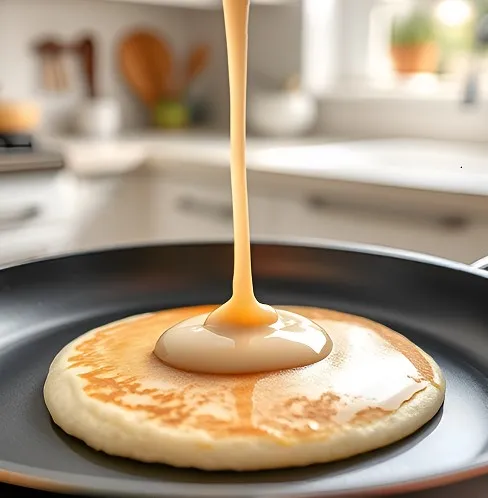
7. Serving Up Deliciousness
After your pancakes are cooked, serve them immediately. They’re best enjoyed fresh off the griddle but can also be kept warm in an oven set to low heat if you find yourself cooking in batches. Whether you prefer them stacked high or served individually, these dairy-free delights pair wonderfully with a variety of toppings. Fresh berries, a drizzle of maple syrup, or even a sprinkle of powdered sugar can elevate your pancake experience.
Mastering the Art of Dairy-Free Pancakes recipe: Tips and Tricks
Even with a foolproof recipe at hand, a few insider tips can make your pancake game even stronger. Here are some professional insights to help you perfect your dairy-free pancakes every time:
Patience Enhances Flavor
Allowing the batter to rest isn’t just a technical necessity—it also grants the ingredients time to infuse their flavors. This brief waiting period helps the baking powder activate, resulting in lighter, more tender pancakes. Consider using this time to clean up your workspace or prepare your favorite toppings.
Temperature is Everything
Achieving the right pan temperature is a balancing act. If you’re new to cooking pancakes, consider doing a test pancake. This dummy piece lets you gauge the heat accurately without risking your entire batch. Adjust the flame or pan temperature as needed, and remember: consistency is key.
Experiment with Non-Dairy Liquids
While our base recipe uses water for a neutral flavor, don’t be afraid to experiment with other non-dairy liquids. You might try almond milk for a slightly nutty taste, or even coconut water for an exotic twist. Each alternative brings its own flavor and texture, so feel free to explore until you find your favorite version of this Pancake Recipe No Milk.
The Egg Factor
Eggs contribute to the pancake’s structure and richness. However, if you or your audience prefers a vegan alternative, flax eggs (1 tablespoon ground flaxseed mixed with 3 tablespoons water per egg) work remarkably well. Whisk the flax mixture in with your other wet ingredients so that the flavor remains subtle and harmonious with the other components.
Consistency Control
If your batter appears too thick, add a splash more water or your chosen non-dairy liquid. Conversely, if it’s too runny, a slight sift of extra flour can help achieve the ideal pancake consistency. Remember, the aim is a batter that pours easily yet still holds enough form to produce a fluffy, thick pancake.
Creative Variations
One of the exciting things about this pancake recipe is its versatility. You can easily incorporate other ingredients into your batter. For instance, a handful of fresh blueberries or a sprinkle of cinnamon can make your pancakes even more inviting. You might also try mixing in a mashed banana for natural sweetness and a denser texture—each variation opens up a new avenue of flavor and delight.
Exploring Nutritious Additions and Serving Ideas
What’s a great pancake recipe without a few creative twists? Consider these ideas that transform your basic dairy-free pancakes into a well-rounded meal:
Integrate a spoonful of chia seeds into the batter for extra fiber and omega-3 fatty acids. This addition not only boosts the nutritional profile but also lends a slight crunch that contrasts pleasantly with the soft pancake. Another approach is to sprinkle in some finely chopped nuts or seeds—walnuts, pecans, or sunflower seeds offer a delightful texture and subtle nutty flavor without overwhelming the pancake’s delicate taste.
For those seeking a heartier breakfast, serve your pancakes alongside a small bowl of fresh fruit salad. Citrus, berries, and even sliced apples add a burst of color and provide essential vitamins to jump-start your day. Drizzle over a homemade fruit coulis or sugar-free yogurt (dairy-free versions are widely available) to add both moisture and an extra layer of flavor.
Additionally, you might consider pairing your pancakes with a side of scrambled tofu or avocado toast. These options not only provide additional proteins and healthy fats but also create a more balanced meal that goes well beyond the traditional pancake stack. Remember, the goal with this Pancake Recipe No Milk isn’t just to create a delicious breakfast; it’s to craft an experience that suits your lifestyle and dietary needs seamlessly.
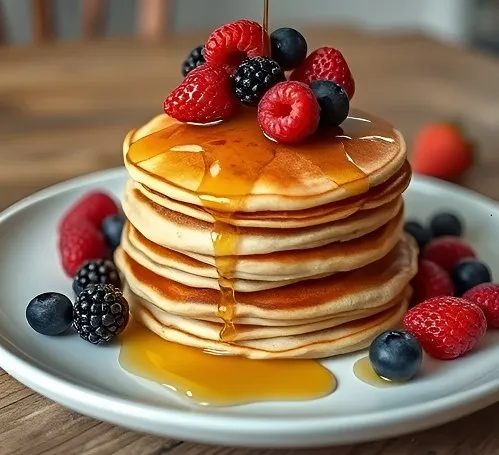
Embracing a Clean Kitchen and Sustainable Cooking Practices
In today’s world, conscious cooking goes hand in hand with delicious pancake recipes. Creating dairy-free pancakes isn’t just about avoiding milk—it’s an opportunity to embrace sustainability and mindfulness in your culinary journey. Using non-dairy ingredients often means opting for products that support eco-friendly practices and have a lower carbon footprint compared to traditional dairy.
When selecting your ingredients, take a moment to inquire about locally produced organic options or shop at farmers’ markets. These small choices can add layers of sustainability and trust to your cooking routine. Moreover, by mastering a simple yet versatile pancake recipe like this, you’re empowered to reduce food waste and experiment with seasonal produce—all while enjoying a meal that feels both hearty and wholesome.
Cooking in a clean, well-organized kitchen also boosts your confidence and uplifts the overall experience. With every step streamlined—from gathering ingredients to that first delicious bite—you’ll discover that each moment in the kitchen can be an exercise in creativity and care for both your well-being and the environment.
A Few Frequently Asked Questions
Over time, many home cooks have shared their questions and tweaks for dairy-free pancakes. Here are some frequently asked questions that might clarify any lingering doubts about our Pancake Recipe No Milk:
Q: I’m allergic to eggs. What can I use instead?
A: If eggs are off the table, flax eggs or chia eggs (1 tablespoon chia seeds mixed with 3 tablespoons water) work well as substitutes. These alternatives bind the ingredients nicely and maintain a satisfying texture.
Q: Can I prepare the batter ahead of time?
A: Yes, you can prepare the batter in advance and let it sit in the fridge for up to 24 hours. However, for optimum rise and fluffiness, I suggest using freshly mixed batter, as the leavening agents are most active right after the mix.
Q: My pancakes sometimes turn out dense. What should I do differently?
A: Overmixing the batter is often the culprit behind dense pancakes. Stir gently until ingredients are just combined. Additionally, make sure your baking powder is fresh, as this is key to achieving that light and airy texture.
Q: What non-dairy liquid do you recommend if I want a richer taste than water offers?
A: Almond milk, soy milk, or oat milk can add a slight creaminess and flavor without reintroducing actual dairy. Choose an option that aligns with your taste preference—each gives a unique twist to the classic recipe.
Bringing It All Together: Why This Pancake Recipe No Milk Stands Out
At its core, this pancake recipe represents more than just a dairy-free alternative—it’s a celebration of culinary creativity and accessibility. We’ve talked about the history behind pancakes, explored various substitutions, and provided practical tips to help you perfect your technique. But what truly sets this pancake recipe apart is its ability to bring joy to every breakfast table, regardless of dietary restrictions.
Every element of this Pancake Recipe No Milk has been intentionally selected to ensure that it’s not only healthy and easy to make, but also incredibly satisfying. The use of simple ingredients creates an opportunity for you to experiment with flavors, toppings, and textures, turning a basic pancake into an individualized masterpiece that reflects your personality and taste.
In particular, think about how the absence of milk opens up new ideas. Traditional recipes sometimes mask the pure flavors of the other ingredients. By removing dairy, you allow the natural sweetness of the sugar, the slight tang from any egg alternatives, and the subtle nuances of your chosen non-dairy liquid to shine through. This refined focus lets you explore more creative seasoning and topping combinations than you might with heavier, milk-based batters.
Expert Insights: Lessons Learned Through Years of Pancake Perfection
Throughout my years of experimenting with breakfast recipes, one truth remains clear: cooking is as much about technique as it is about inspiration. While following a pancake recipe precisely is important, don’t be afraid to make adjustments that suit your kitchen environment or personal preferences. Some mornings, you might be in the mood for extra crispy edges; on other days, a softer, more cake-like texture might be what you desire. Here are a few nuggets of wisdom:
Start by understanding your equipment. Every stove and pan behaves a little differently. It might take a few tries to pinpoint that exact medium heat where your pancakes bubble just right without burning. Over time, you’ll develop an instinctive sense for your tools, turning cooking into an art form that’s both predictable and full of pleasant surprises.
Don’t be intimidated by “failures.” Even the best chefs face a pancake that doesn’t quite meet expectations. Each batch teaches you something new about the balance of ingredients and the behavior of the batter. Embrace these lessons, and soon you’ll master a pancake recipe that not only meets but exceeds your expectations.
Take pride in your presentation. Even a simple dish becomes elevated when served with thoughtful garnishes—a scattering of fresh fruit, a dusting of powdered sugar, or even a drizzle of warm, dairy-free caramel sauce can transform your plate into a work of art that delights both the eyes and the palate.
Beyond Breakfast: Pancakes as a Versatile Canvas
While pancakes are often synonymous with breakfast, they can easily transition into other meals. Imagine hosting a brunch party where you serve an array of pancake variations—each crafted to suit different tastes. Some might prefer a savory version, where rosemary and a touch of sea salt replace the usual sweetness, while others might opt for a dessert pancake topped with berries and a splash of coconut cream.
This versatility is part of what makes developing a robust Pancake Recipe No Milk so satisfying. You have a base that is as adaptable as it is delicious. Experiment with your family’s favorite spices or mix in seasonal fruits. The canvas is blank, and you’re the artist.
Moreover, dairy-free pancakes can align with healthy eating habits without compromising on flavor. They can be easily incorporated into a balanced diet when paired with protein-rich foods, fiber-packed fruits, and nourishing fats. This makes them not only a treat for the taste buds but also a step toward a mindful, health-conscious lifestyle.
In Conclusion
This article has taken you through a comprehensive exploration of our ultimate Pancake Recipe No Milk—from its historical roots and energetic spirit to the nuts and bolts of perfecting your batter. With over a few simple ingredients and a passion for flavor, you have a pancake recipe that challenges the conventional, lifts restrictions, and invites everyone to enjoy a timeless dish regardless of dietary limitations.
